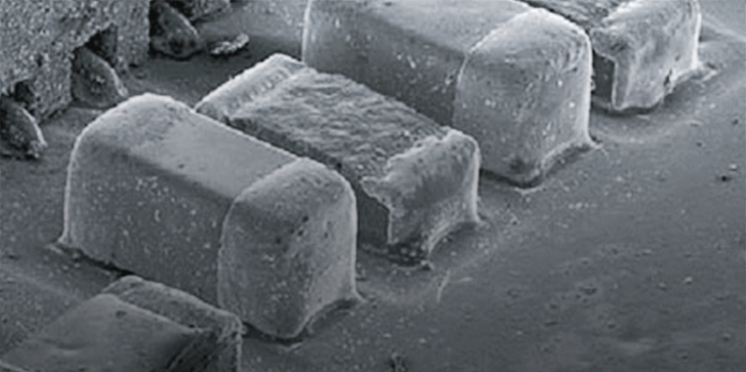high-angle annular dark-field scanning transmission electron microscopy, HAADF-STEM
high-angle annular dark-field scanning transmission electron microscopy
High-angle annular dark-field scanning transmission electron microscopy (HAADF-STEM) is a STEM method which receives inelastically scattered electrons or thermal diffuse scattering (TDS) at high angles using an annular dark-field (ADF) detector (~50 to sufficiently high angle; e.g. ~200 mrad). A STEM image is acquired by displaying the integrated intensities of the electrons in synchronism with the incident probe position. As the HAADF image intensity is reported to be proportional to 1.4 square to a square of the atomic number, heavy atoms are observed brighter, but light atoms are difficult to be observed. The HAADF image is easily interpreted due mainly to two reasons.
1) No multiple scattering arises because the scattering cross section of TDS at high angles used for the imaging is small.
2) The interference effect of electrons does not take place for the imaging (non-interference image).
The resolution of the HAADF image is almost determined by the incident probe diameter on the specimen. A high-performance STEM instrument provides a resolution better than 0.05 nm. A combined use with EELS, which uses electrons transmitted through the center hole of the ADF detector, enables element analysis column by column. Nowadays, the annular bright-field (ABF) STEM and the low-angle annular dark-field (LAADF) STEM are utilized as STEM methods to effectively visualize light atoms.

Fig.(a) Relationship between the convergence semi-angle of the incident electron beam and acceptance semi-angles of the detector for HAADF-STEM. Typical inner and outer semi-angles of the detector are respectively β1 = ~50 mrad and β2 = ~200 mrad, detecting inelastically scattered electrons at high angles. The value of the convergence semi-angle α is approximately 25 mrad for a 200 kV Cs-corrected TEM. Usually, an ABF detector and a LAADF detector are placed below a HAADF detector.
1) No multiple scattering arises because the scattering cross section of TDS at high angles used for the imaging is small.
2) The interference effect of electrons does not take place for the imaging (non-interference image).
The resolution of the HAADF image is almost determined by the incident probe diameter on the specimen. A high-performance STEM instrument provides a resolution better than 0.05 nm. A combined use with EELS, which uses electrons transmitted through the center hole of the ADF detector, enables element analysis column by column. Nowadays, the annular bright-field (ABF) STEM and the low-angle annular dark-field (LAADF) STEM are utilized as STEM methods to effectively visualize light atoms.

Fig.(a) Relationship between the convergence semi-angle of the incident electron beam and acceptance semi-angles of the detector for HAADF-STEM. Typical inner and outer semi-angles of the detector are respectively β1 = ~50 mrad and β2 = ~200 mrad, detecting inelastically scattered electrons at high angles. The value of the convergence semi-angle α is approximately 25 mrad for a 200 kV Cs-corrected TEM. Usually, an ABF detector and a LAADF detector are placed below a HAADF detector.
Related Term(s)
Term(s) with "high-angle annular dark-field scanning transmission electron microscopy" in the description
Are you a medical professional or personnel engaged in medical care?
No
Please be reminded that these pages are not intended to provide the general public with information about the products.




